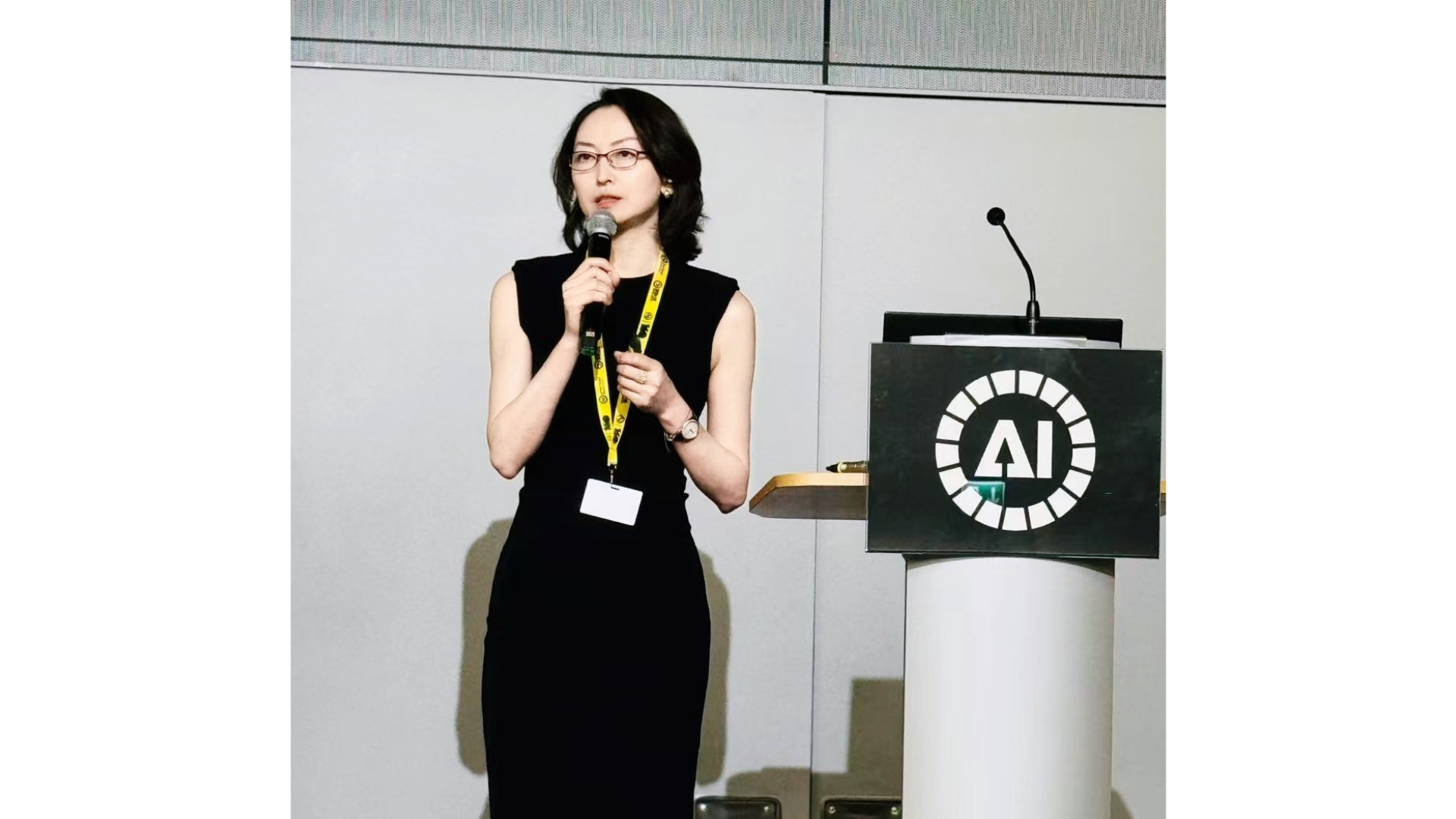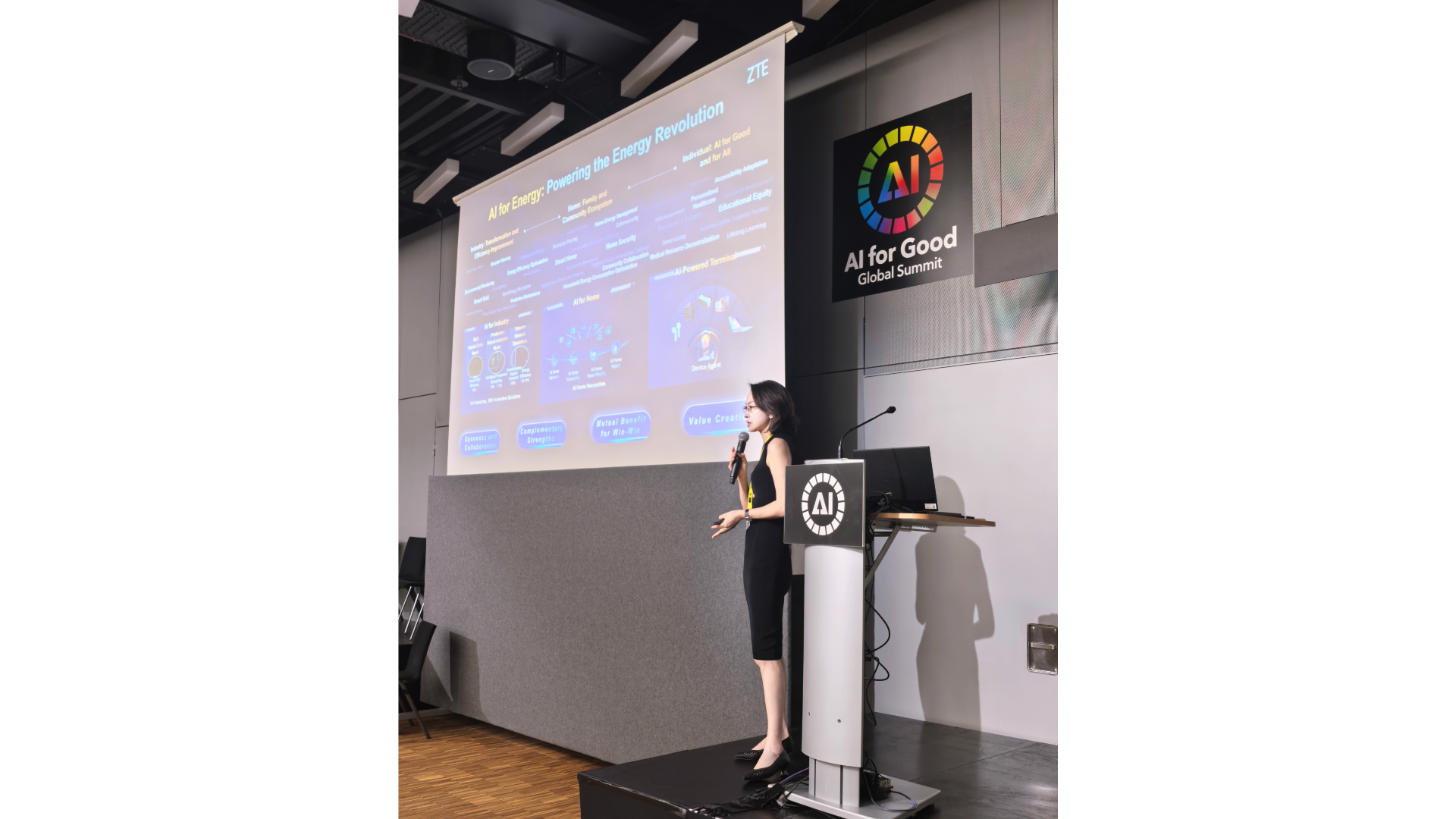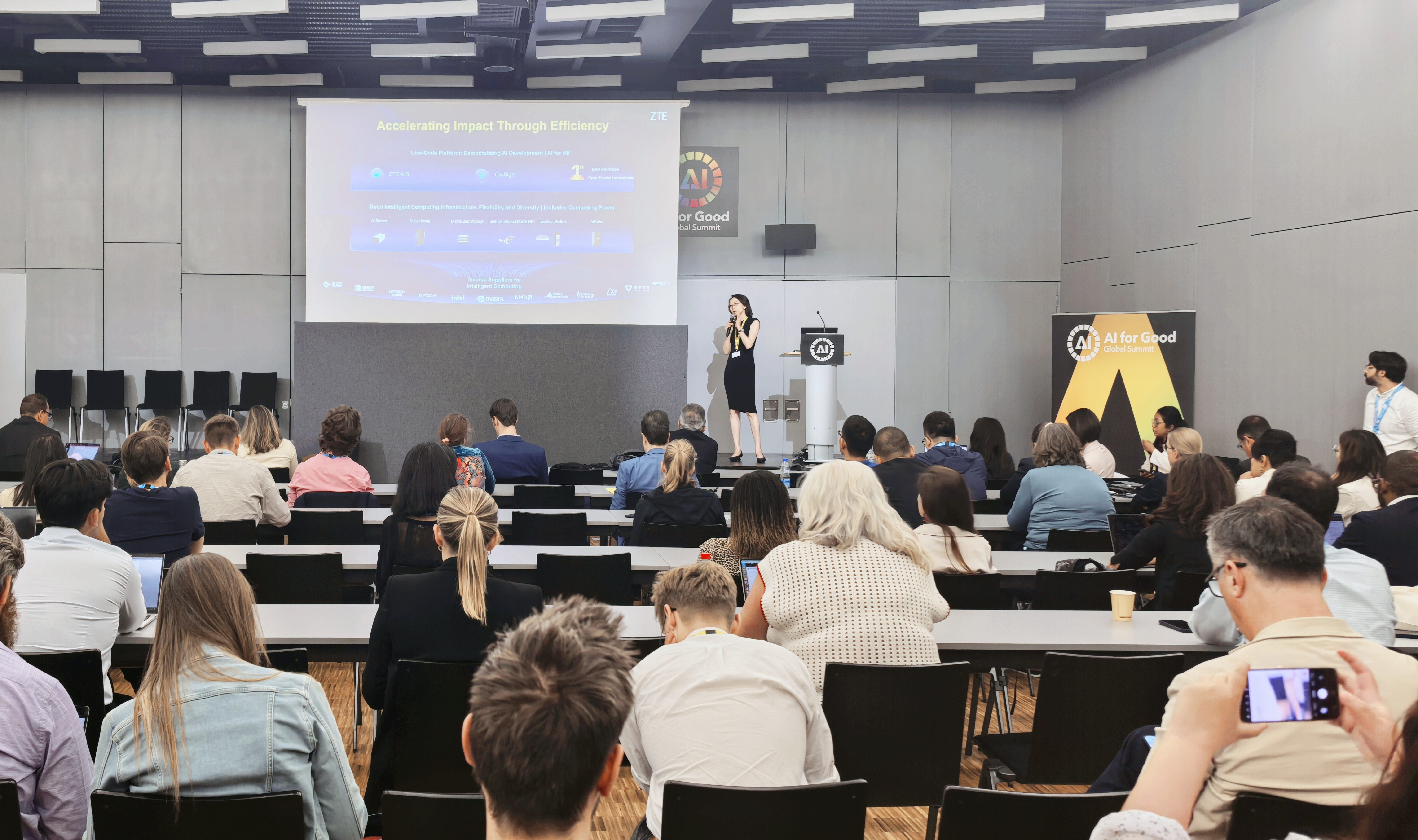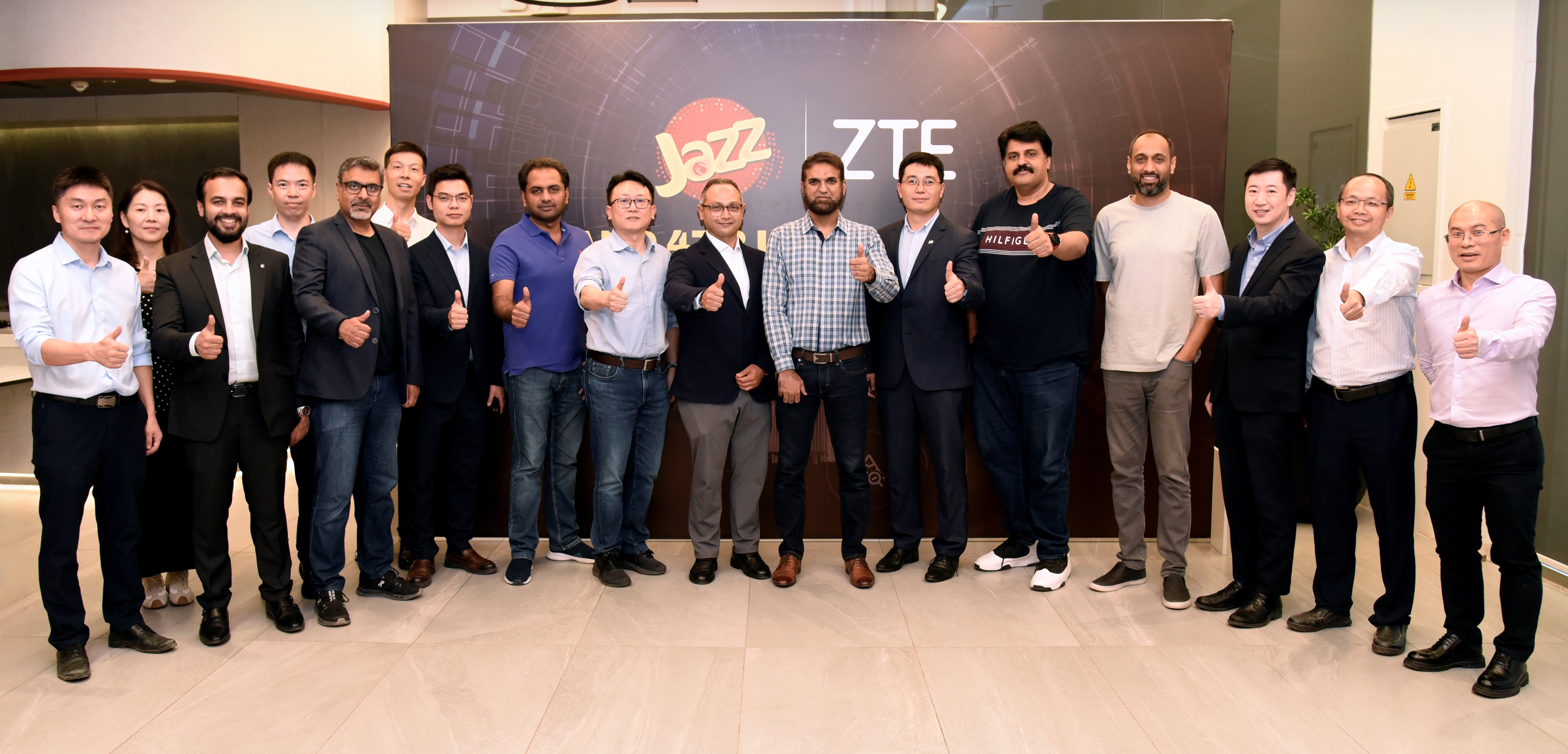ZTE CDO Cui Li Highlights Efficient and Green AI as a Driver of SDGs Progress at AI for Good Global Summit
- ZTE focuses on tackling the industry's "Inverted Triangle Dilemma" on three levels—developing efficient infrastructure, enabling efficient intelligence enhancement, and accelerating impact through efficiency—collectively driving the efficient and green development of AI
- Under the core strategy of "AI for All", ZTE has deeply integrated AI with its ICT technologies and products to build full-stack intelligent solutions
Geneva, Switzerland, 11 July, 2025 - ZTE Corporation (0763.HK / 000063.SZ), a global leading provider of integrated information and communication technology solutions, announced that Cui Li, the company's Chief Development Officer (CDO), was invited to attend the workshop themed "Navigating the Intersect of AI, Environment and Energy for a Sustainable Future" at the AI for Good Global Summit 2025 held in Geneva. During the session, she delivered a speech titled "Accelerating Progress Towards SDGs with AI-powered New Paradigm", where she shared ZTE's innovative efforts to drive efficient and green AI, and to deepen the integration of AI with ICT technologies and products, with the goal of accelerating AI accessibility and low-carbon transformation of society.

Cui Li observed that the latest AI surge, driven by large language models, is sweeping the world at incredible speed. This rapid advance is accompanied by soaring computing demands and surging energy consumption. Achieving sustainable AI has therefore become an industry-wide imperative, and the key lies in defining a clear and efficient pathway. Framing the issue from two perspectives—"Energy for AI" and "AI for Energy"—she outlined how companies can scale AI in a greener, more efficient manner and, in turn, harness AI to drive an energy transition that cuts costs, improves efficiency, and supports a low-carbon future.
In terms of "Energy for AI", Cui Li emphasized that the industry faces an "Inverted Triangle Dilemma" and efficiency holds the key to solving the dilemma. In response, ZTE is tackling the issue on three levels—developing efficient infrastructure, enabling efficient intelligence enhancement, and accelerating impact through efficiency—collectively driving the efficient and green development of AI.

With respect to "AI for Energy", she highlighted that under the core strategy of "AI for All", ZTE has deeply integrated AI with its ICT technologies and products to build full-stack intelligent solutions. The company is now deploying AI capabilities across industrial, household and consumer scenarios, enabling cost-efficiency, operational gains and a lower-carbon trajectory for the wider economy.
AI for Good is organized by ITU in partnership with over 40 UN Sister Agencies and co-convened with the Government of Switzerland, committed to identifying innovative AI applications, building skills and standards, and advancing partnerships to solve global challenges. Since the inaugural AI for Good Global Summit in 2017, which brought together over 400 top-minds in AI, the platform has grown far beyond its origins, evolving into a vibrant multi-stakeholder community including governments, academia, industry, civil society and UN.

Below is the full transcript of Cui Li's speech titled "Accelerating Progress Towards SDGs with AI-powered New Paradigm":
Your excellences, ladies and gentlemen, good day! I'm Cui Li from ZTE, and it's a pleasure to speak at this summit. It was really inspiring to hear the previous speakers on various ways of harnessing AI to do something good for our sustainable future. Today I'd like to share how we can accelerate progress towards SDGs with AI-powered new paradigm.
AI has been around for over 70 years. But in the last two years, things have changed fast—think of ChatGPT, DeepSeek, and other emerging large language models. They're amazing, but they also bring big challenges, especially for sustainability. For instance, how do we possibly keep advancing AI without hurting our planet? That's what I want to share with this group.
Let's start with asking ourselves a fundamental question: Is the future of AI ultimately bound by energy? People may view it differently. But whatever the answer, one thing is for sure, energy is the huge issue.
As we all know, for the sustainable development of AI, we need two things: lots of data and massive computing—that is, the constant pursuit of computing efficiency against ever larger models. And for every zettabyte of data—that's a billion trillion bytes—we need about 300,000 servers. The scaling laws continue to drive AI forward, not just in training but now into inference, together with the rapid growth in service scale and real-world application, all placing huge demands on hardware and resources.
As AI models get increasingly bigger, they become more energy intensive as well. So, sustainability should be a goal for all of us. Then what should we do? At ZTE, we believe that the answer is efficiency. Now that we've established the "what", let's dive deeper into the more important "how".
Our "how" includes two parts: energy for AI, and AI for energy.
Let's begin with energy for AI.
The evolution of AI has always been driven by three forces: algorithms, data, and computing. But its future depends on something we often overlook: the environment it thrives in.
Today, we face what I call the "Inverted Triangle Dilemma".
As you can see at the bottom, high-quality data, which is definitely our most critical resource, is running out, forcing us to turn to synthetic ones.
At the algorithm and computing levels, we're facing efficiency limits, resource shortages, and technical challenges.
And beyond these, we must also focus on the health and security of our industry chain, alignment with business demands and scenarios, and challenges in talent, funding, and of course–energy consumption.
The key to solving this dilemma? Efficiency. Not as an afterthought, but as our core strategy. And we have built our approach on three levels.
First, developing efficient infrastructure—redefining infrastructure at all levels: die, chip, server, network, and DC.
Second, enabling efficient intelligence enhancement—developing algorithms that learn smarter, data that multiplies value, and AI technologies that bring them together to speed up tasks.
And third, accelerating impact through efficiency—because technology means nothing if it can't reach the businesses and individuals that need it most.
Alone, each level stands strong. But together? They create something extraordinary—a new paradigm where AI doesn't just grow, but grows responsibly and greenly.
Something a bit more technical, let's look at developing efficient infrastructure. Bits cannot exist without atoms. Every software application—including AI—runs on hardware. If they're not efficient, energy is wasted. The ICT industry has already established many best practices. So let me highlight just two examples.
The first one is about high-speed networks. They connect everything—dies, chips, servers, and data centers. Faster connections mean less energy wasted. At ZTE, we're building advanced networks to make AI computing more efficient.
Another example is our intelligent data centers. They are designed to solve three challenges: energy hunger, density limits, and mixed workloads. A good case in point? ZTE's adaptive cooling system, smart enough to handle any scenario, and efficient enough to save energy and costs.
How to fully utilize the capacities of those fancy infrastructure? Let's focus on enabling efficient intelligence enhancement. For large AI models, size isn't everything—getting larger doesn't always mean getting smarter. And we may know a law in the tech world—what Andy gives, Bill takes away. So, besides upgrading infrastructure all the way, we must optimize data and algorithms.
Think of data as soil. Its volume, purity, and security decide how well AI as a plant can grow. To improve data, we build sample libraries, automate labeling, and use knowledge graphs for AI to connect and understand facts. This makes our datasets more complete, accurate, and adaptable.
Next, our algorithms are like the roots: they turn data's nutrients into thoughts and decisions. By adopting techniques, and through model compressing, pruning, and distilling, we cut training and inference time and energy usage by half or more.
We also have extra tools that further boost capabilities: Chain of Thoughts and Tree of Thoughts to enable stronger reasoning, multimodal architecture to go beyond just one way of sensing, and others.
Last but not least, we're integrating AI into the real world. Digital twins mirror reality in real time, spatial intelligence helps AI understand environments, and embodied AI, with breakthroughs in sensing, decision-making, and motion control, makes it possible for robots to act effectively in the physical world.
Finally, accelerating impact through efficiency—how to make AI work well in real-world scenarios and businesses. It's about solving problems, creating value, and building a data flywheel. For progress and sustainability in human society, AI's production value far outweighs its emotional appeal. We hope this AI wave drives an industrial revolution and brings benefits to all. This is essentially AI for good.
And at ZTE, we put this vision into practice with three key initiatives:
· First, introducing GPUs from diverse suppliers, such as Nvidia and Cambricon, for intelligent computing, and interconnecting servers based on protocols like OLink.
· Second, developing open and composable AI infrastructure with products like AiCube, solving the issues of cost, latency, and security.
· Third, building low-code AI platforms such as ZTE AIS and Co-Sight, with 54 open-source models built in, adopting AI for good and for all.
By decoupling training and inference and using modular design, we enable flexible resource allocation and rapid deployment, accelerating the deep integration of AI with the real economy.
We've done enough for the concept of energy for AI, it's time to briefly talk about AI for energy.
Throughout history, economies rise and fall as a result of humans battling for resources. But now we have a game changer—AI. It not only boosts the efficiency of existing resources, but also generates new ones, driving progress across industries and societies.
At ZTE, our core strategy is "AI for All". We integrate AI with ICT to build a full-stack intelligent computing solution for lower cost, higher efficiency, and lower carbon emissions.
So far, our solutions have been applied to various industries such as steel, education, automotive, finance, and telecom. In total, we have extended our expertise to 18 sectors with over 100 best practices.
In home scenarios, our AI-powered network, computing system, smart display, and robot work together to offer a seamless, secure, and intelligent experience.
For consumers, ZTE puts forward the "AI Together" concept based on terminal-edge-cloud collaboration. We introduce multiple AI models on ZTE Nebula platform to deliver personalized services on smartphones, tablets, and other mobile devices, creating a more intelligent and easier lifestyle for all.
Moving forward, ZTE will further improve its products and partnerships, and continue to uphold "AI for All" to create an inclusive, low-carbon future together.
To conclude, I believe technology itself holds neutrality—it depends on how we use it. AI can now think deeper and handle complex tasks, but the real risk is not being replaced—it's being absent. Progress has never come from intelligence alone, but from human courage, compassion, and commitment. These are the qualities that silicon cannot create. We must believe in humanity. With love, wisdom, and collaboration, we have always overcome challenges—and we will continue to do so as we build a greener and brighter future.
Thank you.



